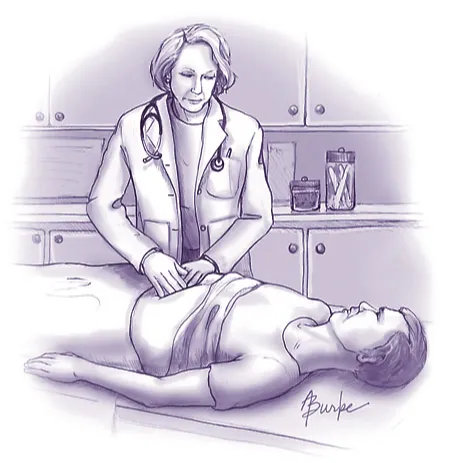Heart Disease Journal of Nursing

Hypertension Patient Education
Tags: blood pressure Educational Practices heart disease hypertension learning patient education
A lesson plan for hypertension in the cardiology clinic setting.
Read More →
Saving Flatlines Through Mechanical Resuscitation
Tags: Cardiac Amyloidosis cardiac arrest cpr heart disease
Introducing the new Lucas device, which provides mechanical resuscitation, allowing for better patient outcomes during a cardiac arrest.
Read More →
Resuscitation for Cardiac Arrest Should Begin and End with Basic Life Support
Tags: cardiac cardiac arrest epinephrine heart attack heart disease
The article discusses Advanced Cardiovascular Life Support (ACLS), which includes medical interventions for cardiac arrest and cardiovascular emergencies beyond Basic Life Support (BLS). While ACLS utilizes interventions like epinephrine administration, oxygen usage, and advanced airways, the author argues that ACLS, particularly the use of epinephrine, fails to show significant benefits in terms of neurological recovery for patients and suggests that financial motivations might contribute to its continued use.
Read More →
Evidenced Based Guidelines: Ischemic Heart Disease
Tags: disease guidelines heart disease Ischemic Heart Disease
Evidenced based guidelines to provide primary prevention and improve correct diagnosis and treatment.
Read More →
Cardiomyopathy: A Closer Look at the Disease
Tags: cardiac arrest cardiomyopathy disease heart disease treatment
Heart disease is a wide term used for a variety of diseases that affect the heart. Heart disease is the leading cause of death in the United States. Cardiomyopathy is one of the types of heart disease that affects about 50,000 Americans annually. There are four types of cardiomyopathy: dilated, hypertrophic, restrictive, and arrhythmogenic right ventricular dysplasia (National Heart Lung and Blood Institute, 2007). This article will detail the different types of cardiomyopathy as well as the causes, treatment, sign and symptoms, diagnostic procedures and prevention. It will also cover ways to live with cardiomyopathy and end of life care.
Read More →
Recognizing Heart Disease As a Women's Disease
Tags: female diseases heart attack heart disease risk factors stress womens disease
There are noted differences among heart disease signs between men and women. Coronary Heart Disease can go unnoticed in women until they actually suffer a heart attack (NIH). Thus it is essential women are aware of the signs and symptoms, risk factors and healthy life style choices to prevent the devastating effects of heart disease. .Seeking early treatment when symptoms present is vital in improving the outcome of heart disease. It is important to teach women how to incorporate prevention strategies such as: consuming a healthy diet, maintaining optimum weight, maintaining an active lifestyle, maintaining both normal blood sugar and blood pressure levels as well as avoiding risk factors such as smoking, drinking alcohol limit their stress and any unhealthy behaviors that can lead to heart disease. Advocating for women and promoting education regarding health issues affecting women needs to be a priority so heart disease in women can be prevented and effectively treated.
Read More →Get Published for Free
Browse by Tag
advocate aging anesthesia behavior cardiac care Case Study child children clinical compassion COVID-19 critical care death diabetes disease education emergency department end of life ethical principles ethical values ethics future of nursing health health care ICU medication mental health nurse Nurse Education nursing nursing education nursing ethics nursing faculty nursing school nursing students PACU patient care patient outcomes patient safety pediatric poem profession risk factors stress student nurse students teaching therapy treatment
Most Popular Last Month
More from RN Journal
Pyelonephritis: A Review of Literature
Female R.N.'s: You May Be Working for Less Pay than Your Male Counterparts
The Effect of an Integrated Mobile Smart app on the Reduction of Patient Readmission Rate
Influenza: Expert Advice You Need Now
The Elusive Lessons of Encephalitis Lethargica
Missionary nurse in the jungles of Honduras
Health and Wellbeing: A Student Nurse's Perspective
My Love Affair with Pain: A Lyric Essay
Relationships among the Elderly: The Effects on One's Health and Psychosocial Well Being









